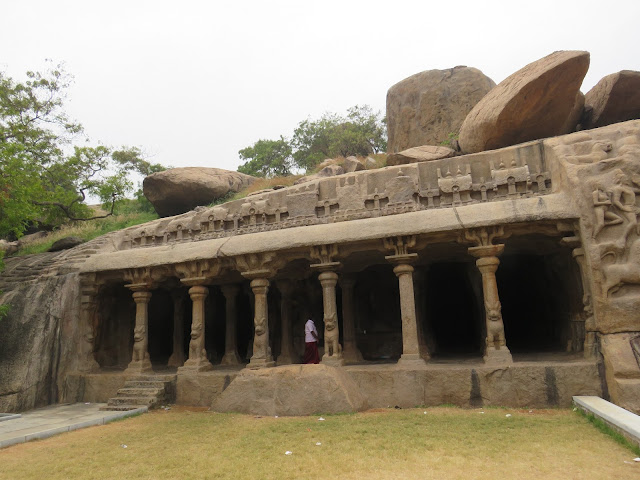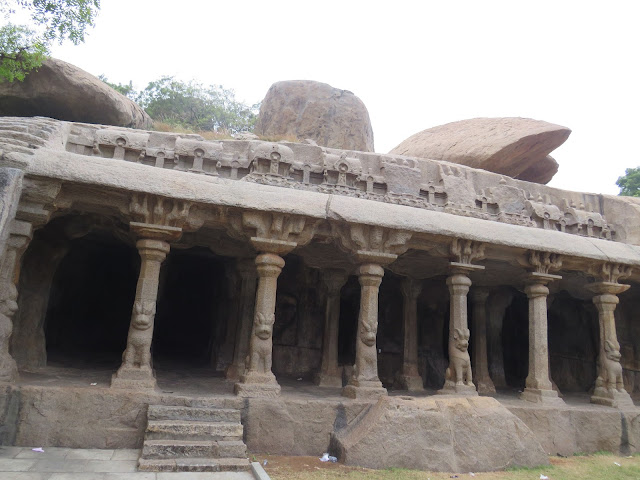Mamallapuram - Pancha Pandava Mandapam
Had this been completed, it would have been the largest rock-cut shrine in Mamallapuram. But, unfortunately, like many other monuments of the town, it also remains an unfinished Pallava marvel.
Standing right next to the Great Penance Relief Panel, this monument is called Pancha Pandava Mandapam. However, it has nothing to do with the Pandava brothers of the Mahabharata epic.
The outer view of the cave shrine gives us an impression as if the monument is finished. However, once we enter inside, we would realize it is mainly left incomplete.
The facade of the cave shrine is supported by six pillars and two pilasters. Five of the six pillars have Vyala base. (Vyala here refers to the lion with horns on its forehead.) One pillar does not have Vyala base. It was damaged and was probably restored during the British period. If we observe intensely, we can realize that not all the Vyalas look similar. Some of them are complete, and the rest of them are unfinished. The pilasters, too, have Vyala bases. The portion of the shaft above the Vyala is octagonal in each pillar.
Over the abacus of these pillars, three miniature Vyalas are found. One Vyala faces the front side, and the remaining two Vyalas face sides. The Vyalas on the sides have riders. It is said to be a rare feature, which could not be found in any other Pallava period cave shrine except for Mahisasuramardini Mandapa.
The top of the facade has rows of kutas and shalas. (For the benefit of beginners: kuta is a miniature shrine with a domical roof; shala is a miniature shrine with a barrel-vault roof). The tiny images of deities inside these small shrines and vyalas on the sides look attractive.
 |
| Kuta |
 |
| Shala |
There are four pillars and two pilasters in the next row. They are simple cylindrical shafts and do not have Vyala bases.
The sanctum is found in the center. The shrine has no sculpture. The area behind the sanctum was not excavated. Otherwise, it would serve as the prakara (circumambulatory/the path to go around the shrine) around the sanctum.
There is no inscription found. There are differences of opinion among the scholars in identifying the builder. I believe that this monument was made by Rajasimha Pallava in the 8th century CE.
Happy travelling.
Note: I have written about this monument in my blog, around ten years ago. I wanted to do a much detailed analysis and hence, I have rewritten the article.












.JPG)
The rampant lions on the haarantaram would very much point to Rajasimha. (They are also found in the Valayankuttai ratham). He finally implemented the saandhaara room in the Kanchi Kailasanatha temple
ReplyDeleteYes, Gopu.
DeleteThanks.